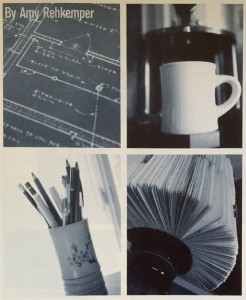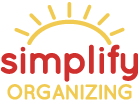
How Organized Are You?
by Amy Rehkemper
 Can you see your desktop?
Can you see your desktop?
A cluttered desk can result in lost information, incomplete assignments, and missed deadlines. Your desk should be an open space to work, free of distractions and clutter. To achieve this, remove everything from your desktop and replace only the most important items: your computer, telephone, daily-used tools (stapler, pencil cup), and daily referenced items (contained in binders or vertical files). Allow no more than two pictures or decorative items to reside on your desk. Display the rest on a bookshelf or office wall.
How long does it take to find a file?
If it takes you over a minute to find a document, your office file system needs some refining. Start by cleaning out your files. Schedule time to purge all unnecessary paperwork and materials. Do not keep anything that can be easily found on the internet. Next, categorize your files. Choose broad categories and assign each one a different file folder color, i.e. marketing-red, clients- yellow, financial- green, vendors- blue. Then, file by subject or alphabetically within.
How often are you interrupted at work?
If you spend half your day fielding calls and emails and chatting with visitors, you need to become more protective of your time. Reduce unnecessary interruptions by positioning your desk so that passers-by will not be able to catch your eye.
A report by Boulder County Business found that, on average, an American is interrupted by email about nine times per hour. Don’t process email continuously, set up specific times and turn off your in-box alerts. Likewise, do not answer the phone just because it rings. Instead, plan a portion of your day to take calls and leave the rest to be picked-up by your secretary or voice mail. This will allow you quiet, focused time to strategize, work up an estimate, or prepare.
Do you have a place for everything?
Everything in your office should have its own specific home. From paperclips and rubber bands to your keys and briefcase, a consistent place must be designated for each to “live” when not in use. Work your way around the room assigning a home for all “orphan items.” Create a place to store things to read, papers to file, and phone messages to be returned. Ask yourself things like, “Where is the most sensible home for receipts,” and “Where will my coat and cell phone be.
Once a place for everything has been achieved, it’s time to containerize. Containers are essential for making your “homes” more reliable. They provide structure and maximize your space. To containerize, try adding drawer dividers to your desk drawers and horizontal paper trays to your supply cabinet. Secure clear, plastic wall pockets near the entrance of your office-one for outgoing items, one for incoming. Buy full-extension cabinets for files and multi-drawer caddies to stow supplies. Hang shelves to better utilize the vertical wall space that is often overlooked. The last and most important step to creating homes and containerizing, is labeling.
If you would like attractive, uniform adhesive labels, purchase an electronic labeler. Identifying each home with a label eliminates confusion and creates permanence.
In order for your office to stay in order, either put items back immediately after use, or set up a 10-minute appointment with yourself at the end of each day. For organization to become a constant in your office you must not only change its appearance, but your habits and behaviors will need to change as well!
